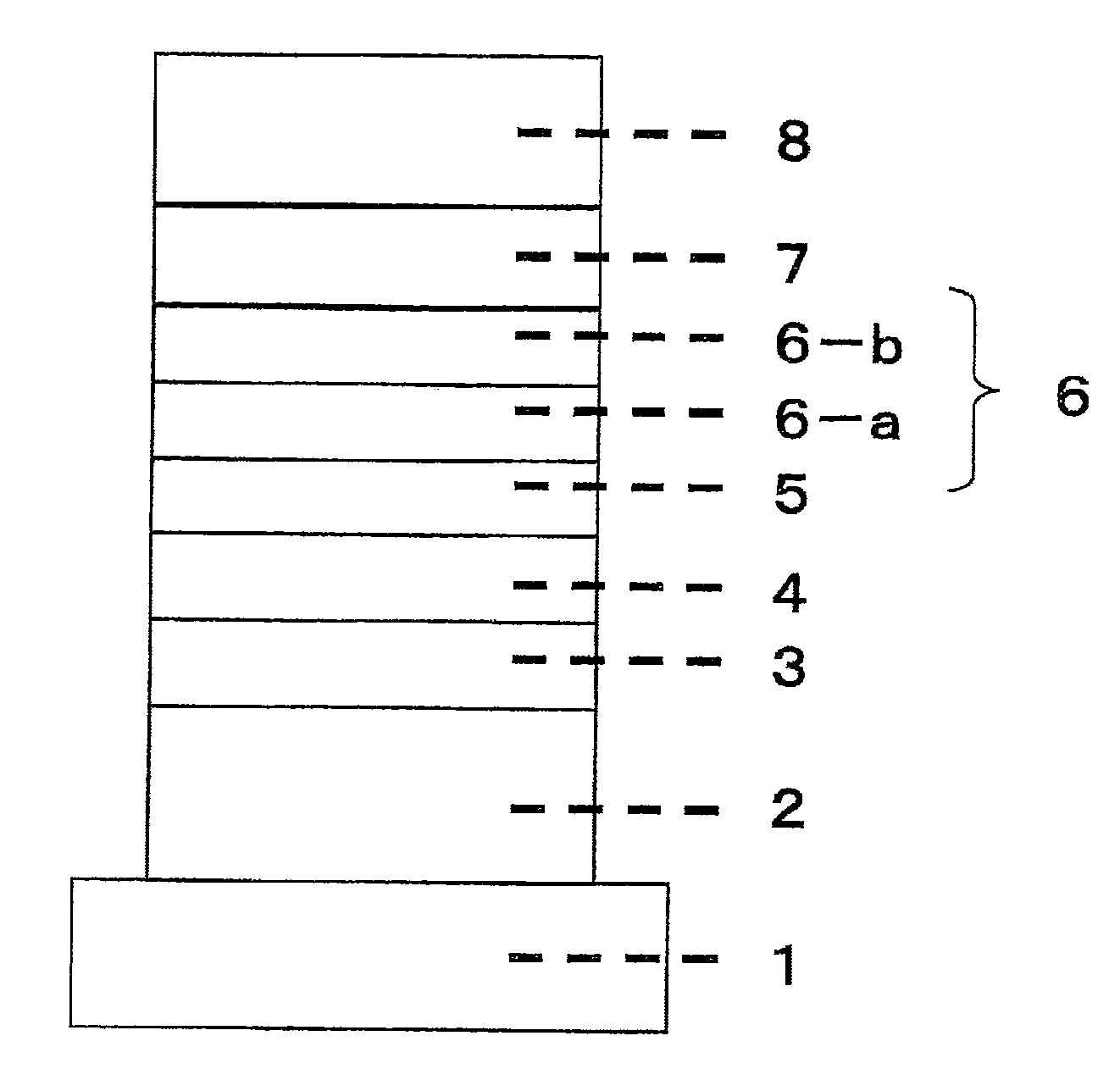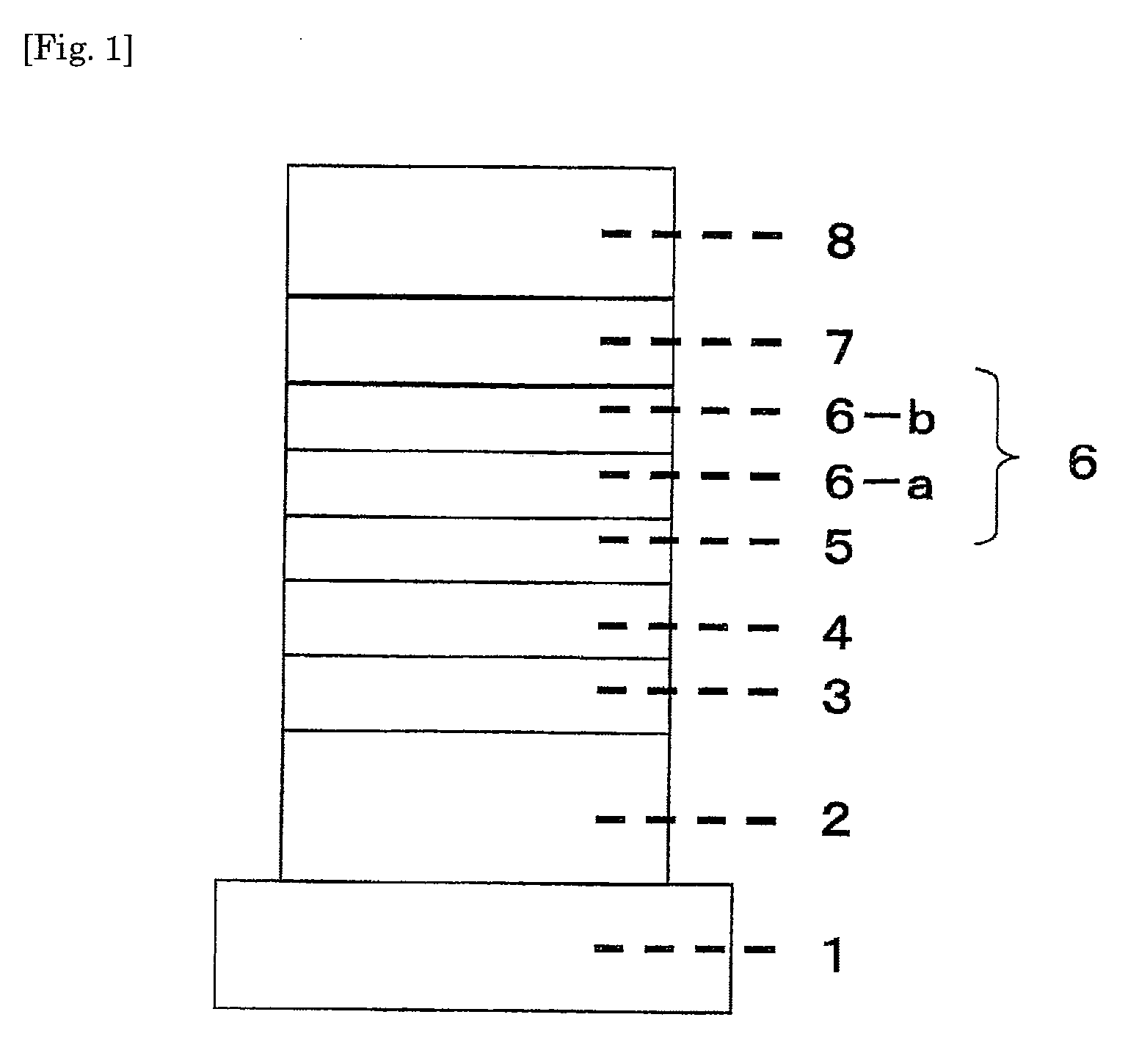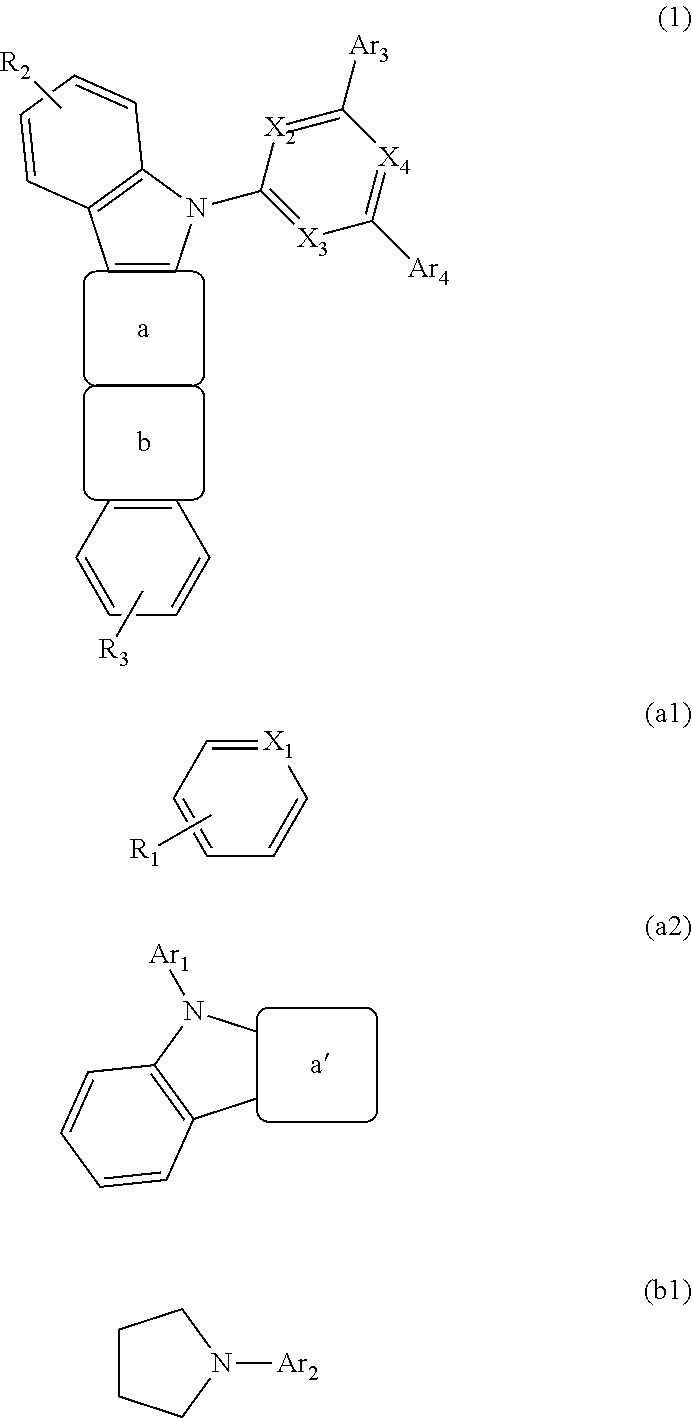Organic electroluminescent device
a technology of electroluminescent devices and organic materials, which is applied in the direction of thermoelectric devices, solid-state devices, organic chemistry, etc., can solve the problems of not teaching at all the use of disclosed indolocarbazole compounds as electron-transporting materials, and too failed to emit light at high efficiency, so as to secure the driving stability of the device, enhance the luminous efficiency of the device, and high efficiency
- Summary
- Abstract
- Description
- Claims
- Application Information
AI Technical Summary
Benefits of technology
Problems solved by technology
Method used
Image
Examples
synthetic example 1
Synthesis of indolo[2,3-a]carbazole
[0058]In a 2,000-ml three-necked flask that had been deaerated and filled with nitrogen were placed 33.3 g (297.0 millimoles) of 1,2-cyclohexanedione, 86.0 g (594.7 millimoles) of phenylhydrazine hydrochloride, and 1,000 ml of ethanol and stirred. To this mixture was added dropwise 3.0 g (30.6 millimoles) of concentrated sulfuric acid over 5 minutes and, upon completion of the dropwise addition, the mixture was stirred at 65° C. for 4 hours. The mixture was cooled to room temperature and the purplish brown crystals formed were collected by filtration and washed twice by reslurrying in 500 ml of ethanol. The crystals were dried under reduced pressure to strip off the solvent and 80.0 g of a purplish brown powder was obtained.
[0059]Then, 72.0 g (261.5 millimoles) of the purplish brown powder obtained above was placed in a 1,000-ml three-necked flask, 720 g of acetic acid and 72.0 g (631 millimoles) of trifluoroacetic acid were further added to the fl...
synthetic example 2
Synthesis of 11-phenylindolo[2,3-a]carbazole
[0060]In a 1,000-ml three-necked flask that had been deaerated and filled with nitrogen were placed 26.0 g (101.4 millimoles) of indolo[2,3-a]carbazole, 122.7 g (601.4 millimoles) of iodobenzene, 54.7 g (287.2 millimoles) of copper iodide, 66.7 g (482.6 millimoles) of potassium carbonate, and 800 ml of quinoline and the mixture was stirred at 190° C. for 72 hours. The mixture was cooled to room temperature, 500 ml of water and 500 ml of dichloromethane were added, and the yellow crystals formed were filtered off. The filtrate was separated into an organic layer and an aqueous layer and the organic layer was washed three times with 500 ml of water. The organic layer was dried over magnesium sulfate, the magnesium sulfate was filtered off, and the solvent was stripped off under reduced pressure. The residue was purified by silica gel column chromatography to yield 13.7 g (41.2 millimoles, 40.6% yield) of 11-phenylindolo[2,3-a]carbazole as a ...
synthetic example 3
Synthesis of indol[3,2-b]carbazole
[0061]In a 2,000-ml three-necked flask that had been deaerated and filled with nitrogen were placed 50.69 g (205.8 millimoles) of 3,3′-methylenediindole and 30.55 g (206.1 millimoles) of triethyl orthoformate, then 640 g of methanol was added, and the mixture was stirred. To this mixture was added dropwise 5.0 g (51.5 millimoles) of concentrated sulfuric acid over 3 minutes and the mixture was heated under reflux for 1 hour. The mixture was cooled to room temperature and the reddish-brown crystals formed were collected by filtration and washed twice by reslurrying in 500 ml of methanol. The solvent was stripped off under reduced pressure and 36.8 g (143.8 millimoles, 69.9% yield) of indolo[3,2-b]carbazole was obtained as a reddish-brown powder.
PUM
 Login to View More
Login to View More Abstract
Description
Claims
Application Information
 Login to View More
Login to View More - R&D
- Intellectual Property
- Life Sciences
- Materials
- Tech Scout
- Unparalleled Data Quality
- Higher Quality Content
- 60% Fewer Hallucinations
Browse by: Latest US Patents, China's latest patents, Technical Efficacy Thesaurus, Application Domain, Technology Topic, Popular Technical Reports.
© 2025 PatSnap. All rights reserved.Legal|Privacy policy|Modern Slavery Act Transparency Statement|Sitemap|About US| Contact US: help@patsnap.com



